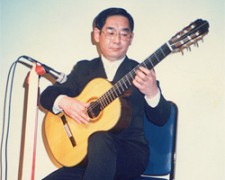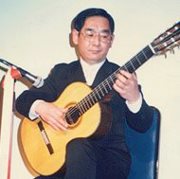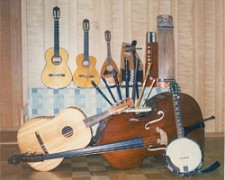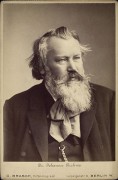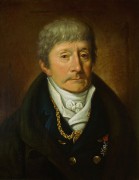- Home
- 音楽 カテゴリのアーカイブ
音楽 カテゴリのアーカイブ
テレサ・テン(鄧麗君 Teresa Teng)について
テレサ・テン(鄧麗君 Teresa Teng)について
関連記事
5月8日 忌日 / 1995年 テレサ・テン(鄧麗君) (台湾:歌手) Teresa Teng (5月8日 今日は何の日~毎日が記念日~)
5月8日 忌日 / 1995年 – テレサ・テン、歌手。(5月8日 – Wikipedia)
テレサ・テン(1953年1月29日 – 1995年5月8日、中華圏で使用された名前は鄧麗君〈デン・リージュン〉)は、台湾出身の歌手。1970年代から1990年代にかけて、中華文化圏全域ないし日本、タイ、マレーシアなども含めたアジアにおいて広く人気を博したその業績から、生前から没後も「アジアの歌姫」と呼ばれている。父親は中国河北省邯鄲市、母親は中国山東省出身で共に外省人で、また父親は元国民党軍の職業軍人であり、彼女自身、軍隊への慰問活動を熱心に行っていたこともあり、「軍人の恋人」(中国語:軍中情人)というニックネームでも有名。死去 / 1995年5月8日、静養のためたびたび訪れていたタイ・チェンマイのメイピンホテルで気管支喘息による発作のため死去。42歳の若さだった。(テレサ・テン – Wikipedia)
Teresa Teng (29 January 1953 – 8 May 1995) was a Taiwanese singer. She was known for her folk songs and ballads, such as “When Will You Return?” and “The Moon Represents My Heart”. She recorded songs not only in Mandarin but also in Taiwanese, Cantonese, Japanese, Indonesian and English. She also spoke French fluently. Teng died from a severe respiratory attack while on vacation in Thailand in 1995, at the age of 42. (Teresa Teng – Wikipedia)
鄧麗君(1953年1月29日-1995年5月8日),本名鄧麗筠,中華民國流行音樂歌手。1967年發行第一張個人唱片專輯,1970至80年代達事業高峰,在日本樂壇發展大獲成功,名氣回嚮中國大陸、香港、台灣、馬來西亞、泰國等。1990年代初淡出樂壇。生於外省家庭,父親是河北大名縣人,母親是山東人,又因父親是中華民國國軍,鄧麗君畢生致力慰問國軍官兵,故又有「軍中情人」之稱。1995年氣喘發作猝逝於清邁;身後香港與臺灣歌壇分別頒發金針獎及金曲獎特別貢獻獎以紀念「一代巨星」的光榮成就。(鄧麗君- 维基百科,自由的百科全书)
関連エントリ
Teresa Teng の検索結果 ー 美幌音楽人 加藤雅夫
ツイッター( Twitter)
フェイスブック (Facebook)
ハワイの国王 カメハメハ1世(Kamehameha I)について
ハワイの国王 カメハメハ1世(Kamehameha I)について
関連記事
5月8日 忌日 / 1819年 カメハメハ1世(カメハメハ大王) (ハワイ国王(初代),ハワイ全島を統一) Kamehameha I (5月8日 今日は何の日~毎日が記念日~)
カメハメハ1世(Kamehameha I、1758年 – 1819年、生年は諸説あり)はハワイ諸島を初めて統一して1810年にハワイ王国を建国し、初代国王となった人物である。カメハメハ大王の名でも親しまれる。「カ・メハメハ」はハワイ語で「孤独な人」、「静かな人」の意。なお、ハワイ語は文字を持たない言語であった関係で、古い文献などではハメハメハ (Hamehameha) と表記される例も見られる。(カメハメハ1世 – Wikipedia)
Kamehameha I (Hawaiian pronunciation: [kəmehəˈmɛhə]; c. 1736? – May 8 or 14, 1819 ), also known as Kamehameha the Great (full Hawaiian name: Kalani Paiʻea Wohi o Kaleikini Kealiʻikui Kamehameha o ʻIolani i Kaiwikapu kauʻi Ka Liholiho Kūnuiākea), was the founder and first ruler of the Kingdom of Hawaii. A statue of him was given to the National Statuary Hall Collection in Washington, D.C. by the state of Hawaii as one of two statues it is entitled to give. (Kamehameha I – Wikipedia)
関連サイト
関連エントリ
アロハ! King Kamehameha Day 2010 in Hawaii – 美幌音楽人 加藤雅夫
Kamehameha I の検索結果 ー 美幌音楽人 加藤雅夫
ツイッター( Twitter)
フェイスブック (Facebook)
マウロ・ジュリアーニ(Mauro Giuliani)について
マウロ・ジュリアーニ(Mauro Giuliani)について
関連記事
5月8日 忌日 / 1829年 – マウロ・ジュリアーニ、ギタリスト、作曲家。(5月8日 – Wikipedia)
マウロ・ジュゼッペ・セルジョ・パンタレーオ・ジュリアーニ(Mauro Giuseppe Sergio Pantaleo Giuliani, 1781年7月27日 – 1829年5月8日)は、ナポリ王国のギタリスト・作曲家。19世紀初頭におけるクラシック・ギターのヴィルトゥオーゾの一人と看做されている。
関連エントリ
Mauro Giulian の検索結果 ー 美幌音楽人 加藤雅夫
ツイッター( Twitter)
フェイスブック (Facebook)
ヨハネス・ブラームス(Johannes Brahms)について
ヨハネス・ブラームス(Johannes Brahms)について
関連記事
ヨハネス・ブラームス(Johannes Brahms、1833年5月7日 – 1897年4月3日)は、19世紀ドイツの作曲家、ピアニスト、指揮者。J.S.バッハ(Bach)、ベートーヴェン(Beethoven)と共に、ドイツ音楽における三大Bとも称される。ハンブルクに生まれ、ウィーンに没する。生涯 / 1833年5月7日にハンブルクで生まれた。1890年ごろには琴の演奏も聞いており、当時出版された日本の民謡集の楽譜に書き込みが残されている。1896年5月20日に生涯親交を保ち続けたクララ・シューマンが死去したのちブラームスの体調も急速に悪化していき、翌1897年4月3日、肝臓癌によりウィーンで逝去した。63歳没。(ヨハネス・ブラームス – Wikipedia)
Johannes Brahms (7 May 1833 – 3 April 1897) was a German composer and pianist of the Romantic period. Born in Hamburg into a Lutheran family, Brahms spent much of his professional life in Vienna, Austria. His reputation and status as a composer is such that he is sometimes grouped with Johann Sebastian Bach and Ludwig van Beethoven as one of the “Three Bs” of music, a comment originally made by the nineteenth-century conductor Hans von Bülow. (Johannes Brahms – Wikipedia)
関連エントリ
Johannes Brahms の検索結果 ー 美幌音楽人 加藤雅夫
ツイッター( Twitter)
フェイスブック (Facebook)
アントニオ・サリエリ(Antonio Salieri)について
アントニオ・サリエリ(Antonio Salieri)について
関連記事
アントニオ・サリエリ(Antonio Salieri、1750年8月18日 – 1825年5月7日)はイタリアのレニャーゴ生まれの作曲家。生前は神聖ローマ皇帝・オーストリア皇帝に仕えるカペルマイスター(宮廷楽長)としてヨーロッパ楽壇の頂点に立つ人物であり、またベートーヴェン、シューベルト、リストらを育てた名教育家でもあった。死後はその名と作品を忘れられたが、戯曲『アマデウス』(1979年)およびその映画版(1984年)の主人公として取り上げられたため、知名度が上昇。2003年に大メゾソプラノ歌手チェチーリア・バルトリがアルバムを出すなど、21世紀に入ってからは音楽家としての再評価の動きもあり、2009年からは生地レニャーゴでサリエリ・オペラ音楽祭が毎年開催されている。(アントニオ・サリエリ – Wikipedia)
Antonio Salieri (18 August 1750 – 7 May 1825) was an Italian classical composer, conductor, and teacher. He was born in Legnago, south of Verona, in the Republic of Venice, and spent his adult life and career as a subject of the Habsburg Monarchy. Salieri was a pivotal figure in the development of late 18th-century opera. As a student of Florian Leopold Gassmann, and a protégé of Christoph Willibald Gluck, Salieri was a cosmopolitan composer who wrote operas in three languages. Salieri helped to develop and shape many of the features of operatic compositional vocabulary, and his music was a powerful influence on contemporary composers. Appointed the director of the Italian opera by the Habsburg court, a post he held from 1774 until 1792, Salieri dominated Italian-language opera in Vienna. During his career he also spent time writing works for opera houses in Paris, Rome, and Venice, and his dramatic works were widely performed throughout Europe during his lifetime. As the Austrian imperial Kapellmeister from 1788 to 1824, he was responsible for music at the court chapel and attached school. Even as his works dropped from performance, and he wrote no new operas after 1804, he still remained one of the most important and sought-after teachers of his generation, and his influence was felt in every aspect of Vienna’s musical life. Franz Liszt, Franz Schubert, and Ludwig van Beethoven were among the most famous of his pupils. Salieri’s music slowly disappeared from the repertoire between 1800 and 1868 and was rarely heard after that period until the revival of his fame in the late 20th century. This revival was due to the dramatic and highly fictionalized depiction of Salieri in Peter Shaffer’s play Amadeus (1979) and its 1984 film version. The death of Wolfgang Amadeus Mozart in 1791 at the age of 35 was followed by rumours that he and Salieri had been bitter rivals, and that Salieri had poisoned the younger composer, yet it is likely that they were, at least, mutually respectful peers. (Antonio Salieri – Wikipedia)
関連エントリ
Antonio Salieri の検索結果 ー 美幌音楽人 加藤雅夫
ツイッター( Twitter)
フェイスブック (Facebook)
お楽しみ文学館(美幌町図書館)について
お楽しみ文学館(美幌町図書館)について
関連記事
美幌町図書館の お知らせ / 平成30年度お楽しみ文学館上映予定 / お楽しみ文学館は、毎月第2金曜日 午後1時30分(13:30)より上映開始です。※上映内容は新規購入などにより変更することがあります。5月11日「くちびるに歌を」出演 / 新垣結衣 木村文乃 他 上映時間 / 132分 終了時間 / 15:42。(お知らせ ー 美幌町図書館のホームページ)
美幌町図書館の カレンダー 2018年5月 / 11日 お楽しみ文学館「くちびるに歌を」13:30〜15:42。(カレンダー 2018年5月 ー 美幌町図書館のホームページ)
美幌町図書館の 行事予定 2018年5月 / 5月の行事 / 11日(金) 13:30〜15:42 2階 視聴覚室 お楽しみ文学館「くちびるに歌を」(132分) 故郷である長崎県五島列島へ、代理の音楽教師として戻ったユリ。いやいや合唱部の顧問になった彼女は、15歳の生徒たちが悩みを抱え、合唱に救いを求めていたことを知る。そして、生徒たちに向き合うようになるが…。監督:三木孝浩 出演:新垣結衣、木村文乃 他。(今月の行事 ー 美幌町図書館のホームページ)
『くちびるに歌を』(くちびるにうたを)は、中田永一の青春小説。NHK全国学校音楽コンクールの課題曲となった「手紙 〜拝啓 十五の君へ〜」の作者であるアンジェラ・アキのテレビドキュメンタリーをもとに小説化された。(くちびるに歌を – Wikipedia)
関連サイト
関連エントリ
ツイッター( Twitter)
フェイスブック (Facebook)
しきたり ルール(rule)について
しきたり ルール(rule)について
関連記事
規則(きそく、ルールとも言う)とは、人の従うべき準則であり、主に文章によって規定されたものをいう。なお、規則に定められたものを原則(げんそく)、または本則(ほんそく)とも呼ばれ、規則に規定されていない事項については例外(れいがい)と称される。個別の名称にはさまざまなものがあり、規則のほかに規制、規程、規定、規約、基準、規準などがある。また、ある物事と別の物事との間に一定の関係が見られるとき、その関係を規則あるいは法則という。(規則 – Wikipedia)
習慣(しゅうかん、英: habit)とは、日常の決まりきった行いのこと。長い間そうすることによって、そうすることがあたかもきまりのようになったこと。概説 / 習慣とは、長い間それを繰り返し行うことで、あたかもそうすることがきまりのようになったことである。基本的には、行動、身体的な振る舞いを指しているが、広くは、ものの考え方など精神的・心理的なそれも含みうる。ある人の習慣は、後天的な行動様式であり、反復して行われることで固定化され、いつしか その人とその人の習慣を切り離して考えることができないような状態になる場合も多い。「習慣は第二の天性なり」とも言われる。(習慣 – Wikipedia)
関連エントリ
ツイッター( Twitter)
フェイスブック (Facebook)
Narciso Yepes ナルシソ・イエペス の捧げもの
- 2018年05月03日(木) 0:44
- カテゴリ: 1000万アクセス, お知らせ, オホーツク, ギター, スペイン, 北海道, 国際, 日本, 映画, 美幌町, 音楽, 音楽療法
- この記事へのコメントは 1 件あります。
Narciso Yepes ナルシソ・イエペス の捧げもの
関連記事
Narciso Yepes (14 November 1927 – 3 May 1997) was born into a family of humble origin in Lorca, Region of Murcia. His father gave him his first guitar when he was four years old, and took the boy five miles on a donkey to and from lessons three days a week. Yepes took his first lessons from Jesus Guevara, in Lorca. Later his family moved to Valencia when the Spanish Civil War started in 1936. On 16 December 1947 he made his Madrid début, performing Joaquín Rodrigo’s Concierto de Aranjuez with Ataúlfo Argenta conducting the Spanish National Orchestra. The overwhelming success of this performance brought him renown from critics and public alike. Soon afterwards, he began to tour with Argenta, visiting Switzerland, Italy, Germany, and France. During this time he was largely responsible for the growing popularity of the Concierto de Aranjuez, and made two early recordings, both with Argenta[6] – one in mono with the Madrid Chamber Orchestra (released between 1953 and 1955), and the second in stereo with the Orquesta Nacional de España (recorded in 1957 and released in 1959). On 18 May 1951, as he leant on the parapet of a bridge in Paris and watched the Seine flow by, Yepes unexpectedly heard a voice inside him ask, “What are you doing?” He had been a nonbeliever for 25 years, perfectly content that there was no God or transcendence or afterlife. But that existential question, which he understood as God’s call, changed everything for him. He became a devout Catholic, which he remained for the rest of his life. In 1952 a work (”Romance”), Yepes claims to have written when he was a young boy,[10] became the theme to the film Forbidden Games (Jeux interdits) by René Clément. Despite Yepes’s claims of composing it, the piece (”Romance”) has often been attributed to other authors; indeed published versions exist from before Yepes was even born[citation needed], and the earliest known recording of the work dates from a cylinder from around 1900.[citation needed] In the credits of the film Jeux Interdits, however, “Romance” is credited as “Traditional: arranged – Narciso Yepes.” Yepes also performed other pieces for the Forbidden Games soundtrack. His later credits as film composer include the soundtracks to La Fille aux yeux d’or (1961) and La viuda del capitán Estrada (1991). He also starred as a musician in the 1967 film version of El amor brujo. In Paris he met Maria Szumlakowska, a young Polish philosophy student, the daughter of Marian Szumlakowski, the Ambassador of Poland in Spain from 1935 to 1944. They married in 1958 and had two sons, Juan de la Cruz (deceased), Ignacio Yepes, an orchestral conductor and flautist, and one daughter, Ana Yepes, a dancer and choreographer. In 1964, Yepes performed the Concierto de Aranjuez with the Berlin Philharmonic Orchestra, premièring the ten-string guitar, which he invented in collaboration with the renowned guitar maker José Ramírez III. After 1964, Yepes used the ten-string guitar exclusively, touring all six inhabited continents, performing in recitals as well as with the world’s leading orchestras, giving an average of 130 performances each year. He recorded the Concierto de Aranjuez for the first time with the ten-string guitar in 1969 with Odón Alonso conducting the Orquesta Sinfonica R.T.V. Española. Apart from being a consummate musician, Yepes was also a significant scholar. His research into forgotten manuscripts of the sixteenth and seventeenth centuries resulted in the rediscovery of numerous works for guitar or lute. He was also the first person to record the complete lute works of Bach on period instruments (14-course baroque lute). In addition, through his patient and intensive study of his instrument, Narciso Yepes developed a revolutionary technique and previously unsuspected resources and possibilities. He was granted many official honours including the Gold Medal for Distinction in Arts, conferred by King Juan Carlos I; membership in the Academy of “Alfonso X el Sabio” and an Honorary Doctorate from the University of Murcia. In 1986 he was awarded the Premio Nacional de Música of Spain, and he was elected unanimously to the Real Academia de Bellas Artes de San Fernando. In the 1980s, Yepes formed Trio Yepes with his son Ignacio Yepes on flute and recorder and his daughter Ana dancing to her own choreography. After 1993, Narciso Yepes limited his public appearances due to illness. He gave his last concert on 1 March 1996 in Santander (Spain). He died in Murcia in 1997, after a long battle with lymphoma. (Narciso Yepes – Wikipedia)
ナルシソ・イエペス(Narciso Yepes、1927年11月14日 – 1997年5月3日)はスペインのギタリスト、作曲家。ナルシソ・ジェペスとも表記される。来歴 / スペインのムルシア地方のロルカ近郊の農家に生まれた。4歳の時に初めてギターに触れ、ロルカの音楽アカデミーでギターを学び、その後バレンシア音楽院に進んでギターや作曲を学んだ。ここで、作曲家のビセンテ・アセンシオ教授に大きな影響を受ける。また、マドリード音楽院では、サインス・デ・ラ・マーサにギターを師事した。1947年12月17日スペイン劇場でのスペイン国立管弦楽団の定演コンサートに名指揮者アタウルフォ・アルヘンタにより招かれ、ロドリーゴのアランフエス協奏曲を演奏した。その後に行われたパリやジュネーヴなどでの演奏会の成功で、イエペスの名はヨーロッパ中に知れ渡った。1952年に、パリのカフェで映画監督のルネ・クレマンと偶然知り合い、「映画自体はすでに撮ってあるが、どんな音楽をつけたらよいか決めかねているので、映画のための音楽を担当してほしい」と監督から依頼を受ける。当初、アンドレス・セゴビアに音楽を担当してもらう予定だったが、すでに映画制作の為の予算を使い果たしており、セゴビアとは制作費の折り合いがつかず、当時まだ新人であったイエペスに音楽担当の依頼をする事となった。 そこで、24歳のイエペスは映画『禁じられた遊び』の音楽の編曲・構成、演奏を1本のギターだけで行った。そして、その映画が公開されると、メインテーマ曲「愛のロマンス」が大ヒットし、世界的に有名なギタリストとなった。それから世界各地でリサイタルやオーケストラとの共演を行い、日本にも1960年から1996年までの間に計17回訪問した。1964年からは、ホセ・ラミレス3世と共同で通常より音域の広い10弦ギターを開発した。演奏の軽快さが多少犠牲になり、一部では批判もあったが、均一な共鳴をもつ透明度の高い音色を実現し、多くの音楽愛好家に受け入れられた。1989年4月スペイン芸術院のサン・フェルナンド王立アカデミーの会員に任命された。これはサインス・デラマーサ、アンドレス・セゴビアに続く3人目の栄誉である。1990年頃に、悪性リンパ腫に冒されている事が発覚し、1993年には医師から演奏活動の中止を忠告されたが、その後も演奏活動を続けた。だが、1996年3月にサンタンデール音楽祭に出演したのが最後のステージとなり、1997年5月3日に69歳で死去した。イエペスの信念である「芸術は神のほほえみである」の名のもとに10弦ギターで世界各地を演奏活動して回ったことにより、日本はもとより全世界で圧倒的な人気を誇り、なお且つ世界各地に及ぼした音楽的影響の高さはひときわ抜きん出ていた。レパートリーの広さ(バッハのリュート組曲におけるバロック・リュートの演奏、テレサ・ベルガンサとの歌の伴奏、世界各地のオーケーストラとのギターコンチェルトによる共演、フェルナンド・ソルの練習曲集の演奏、カタルーニャ地方の民謡を集めた曲集の演奏、ラテン系の近代・現代の作曲家の作品の10弦ギターによる演奏、弟子のモンダンとの二重奏、「トリオ・イエペス」による親子の共演等 )も、来日回数も、他の追随を許さぬものがあり、年間120回にもおよぶ演奏会を30年近く世界各地で行い、今までに録音したレコードの枚数も50枚を超えた(1967年から1989年まではドイツ・グラモフォン専属となった)。日本国内での代表的な弟子として、荘村清志、芳志戸幹雄、小原聖子等がいる。イエペスには数々の栄誉が与えられており、代表的なものとしてムルシア大学名誉博士号、イサベル・ラ・カトリカ十字章、スペイン国王から芸術功労金メダル、スペイン文化賞からスペイン音楽大賞、スペイン作曲家協会賞、国営テレビ局大賞等がある。(ナルシソ・イエペス – Wikipedia)
関連サイト
Narciso Yepes Official Homepage (ナルシソ·・イエペス公式ホームページ)
Ana Yepes (アナ・イエペス)| earlydance.org
関連エント
Narciso Yepes の検索結果 ー 美幌音楽人 加藤雅夫
ツイッター( Twitter)
フェイスブック (Facebook)
花はどこへ行った(ピート・シーガー)について
- 2018年05月03日(木) 0:43
- カテゴリ: 1000万アクセス, お知らせ, アジア, アメリカ, ギター, 北海道, 国際, 日本, 音楽, 音楽療法
- この記事へのコメントは 1 件あります。
花はどこへ行った(ピート・シーガー)について
関連記事
「花はどこへ行った」(はなはどこへいった、原題 Where have all the flowers gone?)は、世界で一番有名な反戦歌とも言われるフォークの楽曲。アメリカンフォークの父とも形容されるピート・シーガーによる作詞作曲であり、シーガーの代表作でもある。「花はどこへ行ったの」と訳される場合もある。歌詞の構成・メッセージ / 「花はどこへ行った 少女がつんだ」→「少女はどこへ行った 男の下へ嫁に行った」→「男はどこへ行った 兵隊として戦場へ」→「兵隊はどこへ行った 死んで墓に行った」→「墓はどこへ行った 花で覆われた」と続き、再び冒頭の「花はどこへ行った 少女がつんだ」となる。最後には必ず「いつになったら わかるのだろう」という言葉で締められているため、「戦争がいつまでも繰り返され、いつになったらその愚かさに気づくのか?」というメッセージ、今度こそもう戦争は絶対に止めようという思いを込めて盛んに歌われることとなった。(花はどこへ行った – Wikipedia)
ピート・シーガー(英語: Pete Seeger、1919年5月3日 – 2014年1月27日)はアメリカ合衆国のフォーク歌手である。20世紀半ばのフォーク・リバイバル運動の中心人物の一人である。第二次世界大戦前の1940年代から全国放送のラジオで活躍し、1950年代はじめにはウィーバーズの一員として一連のヒット作を出した。1960年代にはプロテストソングのパイオニアとして公の場に再登場し、国際的な軍縮、公民権運動を推進した。ソングライターとしては「花はどこへ行った (Where Have All the Flowers Gone?)」(ジョー・ヒカーソン(英語版)との共作)、「天使のハンマー (If I Had a Hammer)」(ウィーバーズのリー・ヘイズ(英語版)との共作)、「ターン・ターン・ターン (Turn! Turn! Turn!)」などの代表作を生み出した。スピリチュアル(霊歌)「ウィ・シャル・オーバーカム (We Shall Overcome)」を1960年代の公民権運動を象徴する歌にした立役者でもある。近年では環境問題について訴える活動を続けていた。90歳の誕生日 / 2009年5月3日、ニューヨーク市のマディソン・スクエア・ガーデンに、ブルース・スプリングスティーンやロジャー・マッギンからジョーン・バエズやアロー・ガスリー(英語版)まで、何十人ものミュージシャンたちが集まり、シーガーの90歳の誕生日を祝った。(ピート・シーガー – Wikipedia)
関連エントリ
Where have all the flowers gone? の検索結果 ー 美幌音楽人 加藤雅夫
Pete Seeger の検索結果 ー 美幌音楽人 加藤雅夫
ツイッター( Twitter)
フェイスブック (Facebook)
2018年(平成30年)4月のアーカイブ
- 2018年04月30日(月) 22:08
- カテゴリ: お知らせ, オホーツク, 健康・福祉, 北海道, 北海道人, 国際, 日常生活, 日本, 美幌町, 観光, 音楽
- この記事へのコメントは 1 件あります。
2018年(平成30年)4月のアーカイブ
美幌音楽人 加藤雅夫 〜北海道美幌町でギターとともに〜
関連記事
アーカイブ / この項目では、図書館学用語について説明しています。 コンピュータ用語については「アーカイブ (コンピュータ)」をご覧ください。 ウェブ情報のアーカイブについては「ウェブアーカイブ」をご覧ください。 映画用語については「フィルム・アーカイヴ」をご覧ください。 arXivについては「arXiv」をご覧ください。アーカイブ (archive) とは、重要記録を保存・活用し、未来に伝達することをいう。日本では一般的に書庫や保存記録と訳されることが多いが、元来は公記録保管所、または公文書の保存所、履歴などを意味し、記録を保存しておく場所である。(アーカイブ – Wikipedia)
関連エントリ
2018 年 04 月のアーカイブ – 美幌音楽人 加藤雅夫
ツイッター( Twitter)
フェイスブック (Facebook)
- Home
- 音楽 カテゴリのアーカイブ











